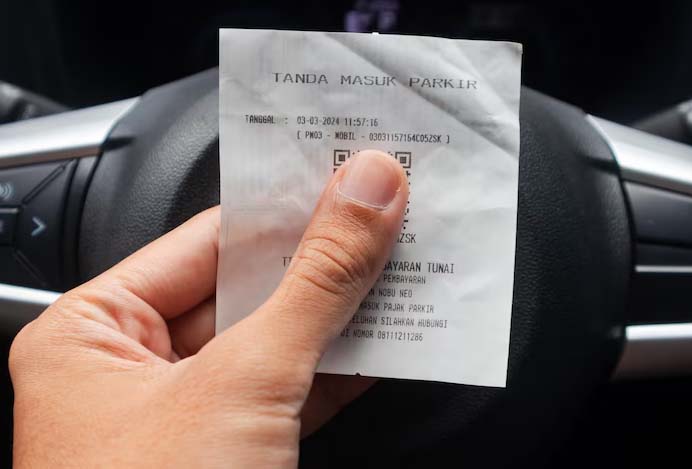
With Malaysia’s progressive rollout of LHDN-mandated e-Invoicing, many businesses are rapidly adapting their processes to stay compliant. While routine B2B transactions are becoming more streamlined, one particular area continues to cause headaches across finance and HR departments, which is staff claims.
Unlike standard supplier invoices, staff reimbursements often involve irregular, small-value, or mixed-purpose expenses: tolls with no receipts, meals without tax invoices, Grab rides under personal names, or hotel stays booked by staff. These are not only difficult to audit but also challenge the new e-Invoice generation logic, especially when no vendor invoice is available.
So how do companies ensure proper treatment of these irregular claims while maintaining full compliance?
In this post, we break down the most common irregular staff claim types, explain the compliance expectations, and offer practical solutions, which including when and how to generate self-billed e-Invoices. Whether you’re managing your company’s finance operations or revamping your HR claim policy, this FAQ will serve as a timely and actionable reference.
1. What makes staff claims particularly tedious for e-Invoicing?
Staff claims are considered tedious due to:
- Unpredictable and irregular claim items (e.g., toll, parking, meals, mileage)
- Variety of claim formats (paper, email receipts, handwritten)
- Lack of standardized documentation (no Tax Invoice from vendor)
- Mixed personal and business expenses
- Frequent small-value transactions with no invoice

2. Which staff claim types are considered irregular for e-Invoicing?
Claim Type (with e-Invoicing Compliance)
| Claim Type | Irregularity | Suggested Claim Process |
|---|---|---|
| 1. Toll Receipts | Often no tax invoice, generic printouts, no company name |
|
| 2. Parking (Cash) | No receipts or informal handwritten receipts |
|
| 3. Ride-hailing (Grab, etc.) | App receipt lacks full tax invoice details, sometimes in employee name |
|
| 4. Meals & Entertainment | Mixed personal/business, no company name on invoice, no tax invoice |
1. Must attach itemized receipt and declare attendees + purpose. 2. Encourage vendor to issue tax invoice in company name or employee name. 3. If not possible, self-billed e-Invoice with justification. 4. Cap meal amounts under internal policy. |
| 5. Mileage Claims | No third-party invoice, self-declared distance |
|
| 6. Hotel/Accommodation | Invoice under staff name, no company billing info |
|
| 7. Airfare | Receipt under staff, lacks tax invoice structure |
|
| 8. Per Diem / Daily Allowance | Internal policy only, no third-party transaction (non-invoiceable) |
|
| 9. Cash Advances | No invoice at advance stage, reconciliation needed later |
|
| 10. Training/Registration | Paid by staff personally, invoice under their name |
|
3. What e-Invoice types apply to staff claims?
- Employee Expense Reimbursement (Type: Expense Invoice)
When a staff claims back business expenses, the company acts as a buyer, and LHDN expects the company to issue a self-billed e-invoice to themselves based on the guidelines from LHDN
4. What is the correct e-Invoicing process for irregular staff claims?
| Step | Action |
|---|---|
| 1. Collect supporting documents: | receipt, invoice, or explanation from staff. |
| 2. Check vendor status: | Is the supplier e-invoice registered? |
| 3. If vendor issued e-invoice: | Staff must obtain invoice in company name for compliance or employee’s name. |
| 4. If vendor NOT issuing e-invoice: | Company must assess whether a self-billed e-invoice is required when reimbursing. |
| 5. For non-invoiceable claims (mileage, per diem): | Use internal policy-based justification. |
| 6. Approve & reimburse: | Only once proper classification & documentation are ready. |
| 7. Record in accounting system | with link to e-invoice UUID for traceability. |

5. Can mileage claims be e-Invoiced?
No, mileage has no third-party supplier. It is non-invoiceable, and must be justified via:
- Company mileage policy (rate/km)
- Supporting log: trip date, distance, purpose
- LHDN allows self-declared reimbursement without third-party e-invoice.
6. What about parking and toll receipts with no tax invoice?
- Employees submit any form of bills/receipt/statements with any proof of payment and other necessary documentation to claim the expense
- Prefer Touch ‘n Go / credit card statement as support to show business-related spending.

7. Can staff submit claims under their personal name invoice (e.g., hotel)?
Yes, but, not preferred.
In situations where company details cannot be provided to the vendor, the e-Invoice can be issued to the staff.
8. Can companies skip e-invoice for small-value staff claims?
No exemption for claim value.
9. Who should generate the self-billed e-Invoice, staff or company?
The company must generate it via:
- ERP/accounting system with e-invoicing module
- LHDN’s MyInvois Portal (manual)
- Middleware integration (e.g., TimeTec e-Invoice engine)
10. Recommended best practices to reduce irregularities?
- Educate staff: Only claim with valid receipts/invoices under company name.
- Maintain claim policy with tax-justified limits (e.g., mileage, per diem).
- Use digital apps for parking, toll, ride-hailing with centralized records.
- Centralize frequent expenses (e.g., hotel bookings, flights) via corporate accounts.
- Deploy self-billed e-invoicing via ERP or middleware for non-compliant vendors.
11. To streamline staff claim, any automation suggestion?
Key Automation Suggestions:
- Standardize templates for self-billed e-invoice generation (per claim type).
- Integrate with HRM/Finance system to automate self-bill based on approved claim.
- Build validation rules (e.g., no parking claim without location tag, mileage limit per month, etc.)

Conclusion
As businesses embrace the e-Invoicing era, staff claims must no longer remain a grey area. By identifying irregular claim types and applying clear processes, including self-billed e-Invoicing where necessary, companies can reduce compliance risk, improve claim accuracy, and ease the workload on finance and HR teams. Ultimately, the goal is not just to tick regulatory boxes, but to build a more transparent, efficient, and digitally accountable reimbursement system.
If your team is still handling staff claims manually or without e-Invoice-ready tools, it’s time to rethink your workflow. A well-defined policy backed by automation can make all the difference.
